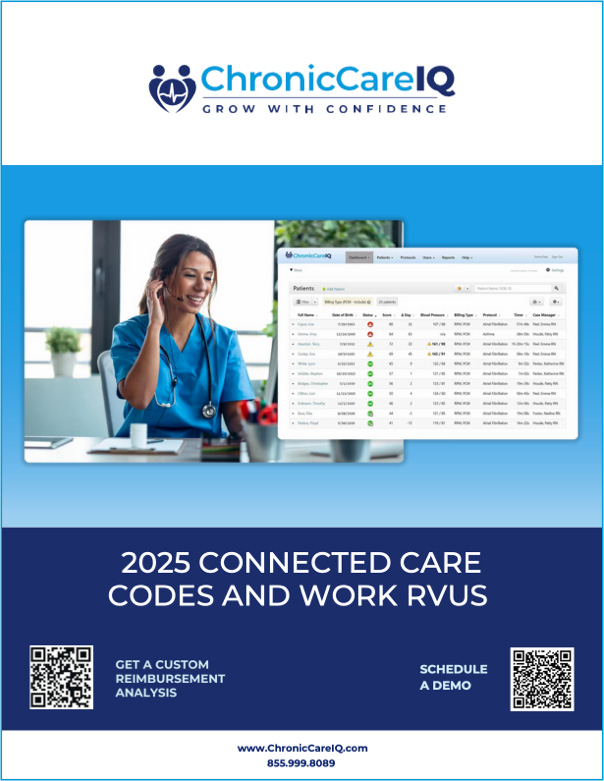Collect and monitor non-physiological data via a medical device as defined by the FDA
ChronicCareIQ has already offered providers support with Remote Physiologic Monitoring (RPM) for years, helping monitor chronic conditions such as hypertension, diabetes, and heart disease. But Remote Therapeutic Monitoring (RTM) capabilities enhance the breadth of remote coverage, and who is eligible to deliver and receive remote services related to musculoskeletal and respiratory conditions. Patients with those conditions or other needs like check-ins for medication or therapy adherence and pain levels can automatically or self-report data through FDA-cleared medical devices.
And while physicians, and non-physician providers like physicians assistants and nurse practitioners can bill for RPM, that landscape varies for RTM, which is a bit more broad – those eligible include physicians, and non-physician providers like physical or occupational therapists, and speech-language pathologists.
Everything you need to know about maximizing CPT billing
Want to know the ins and outs of new opportunities to boost reimbursements for 2025? Which CPT codes are extensions of others, and which aren’t combinable? How about which programs are affected by the recent elimination of time-based thresholds?
It’s all here in ChronicCareIQ’s comprehensive CPT Billing Code resource guide.
